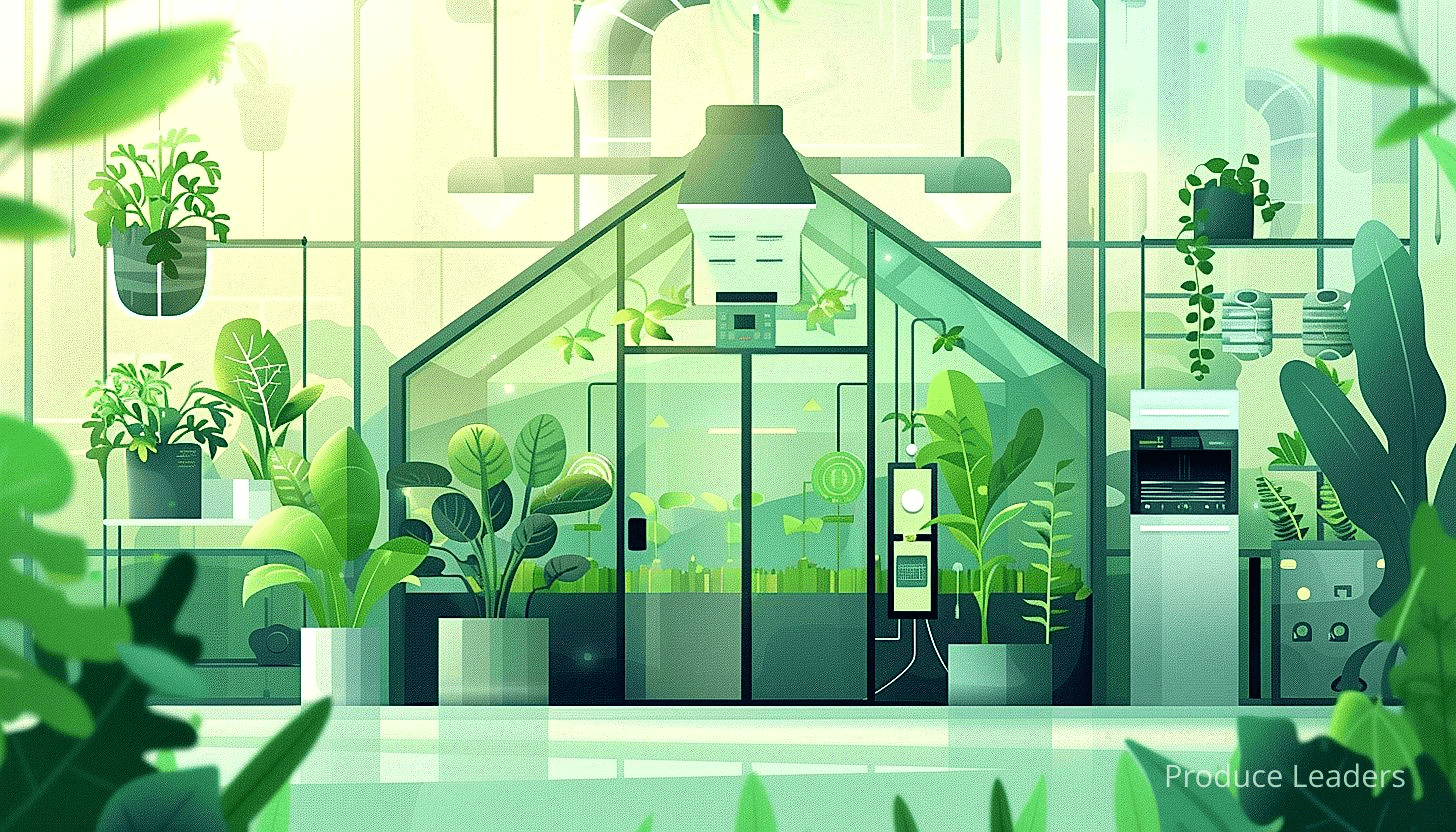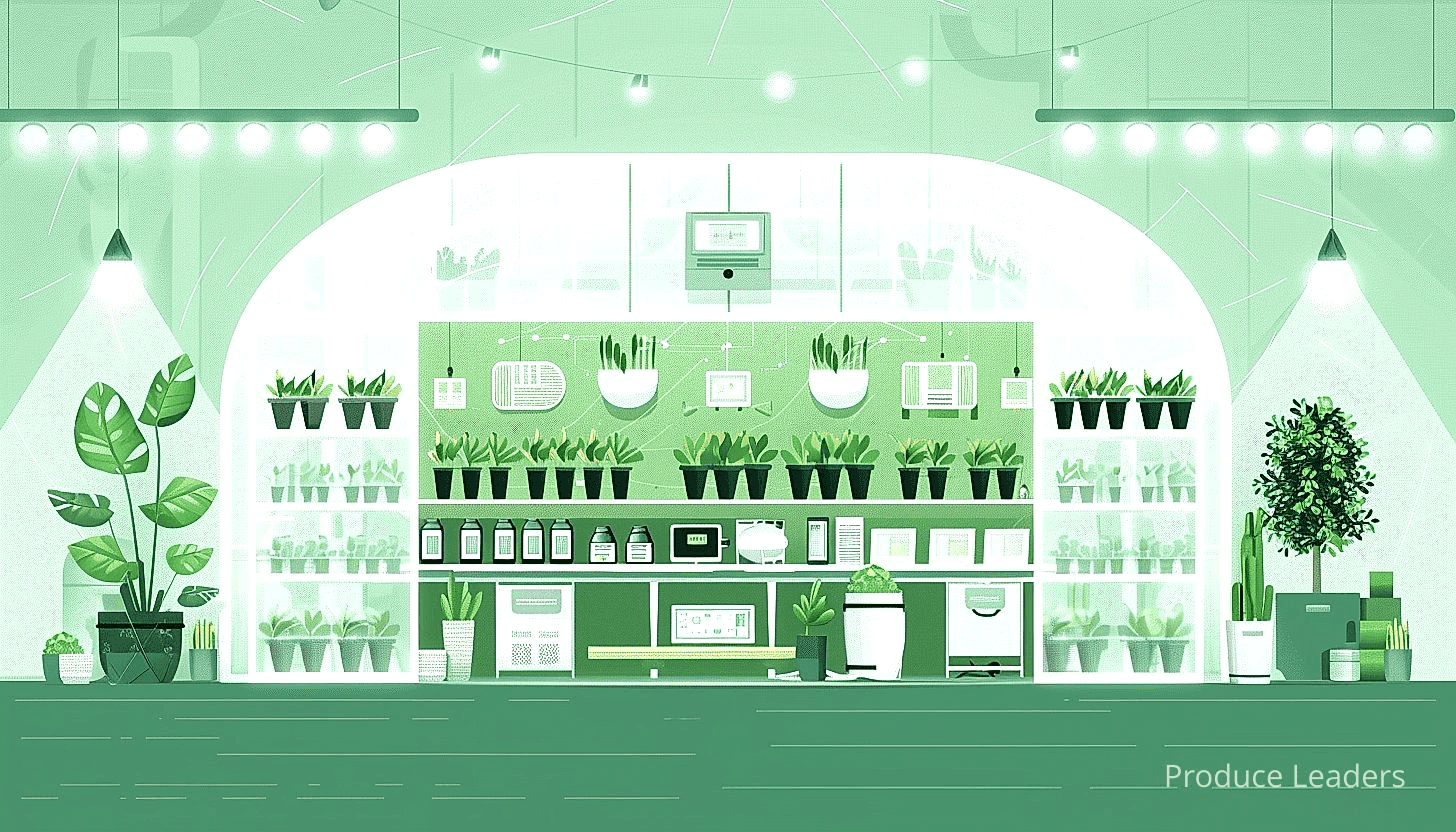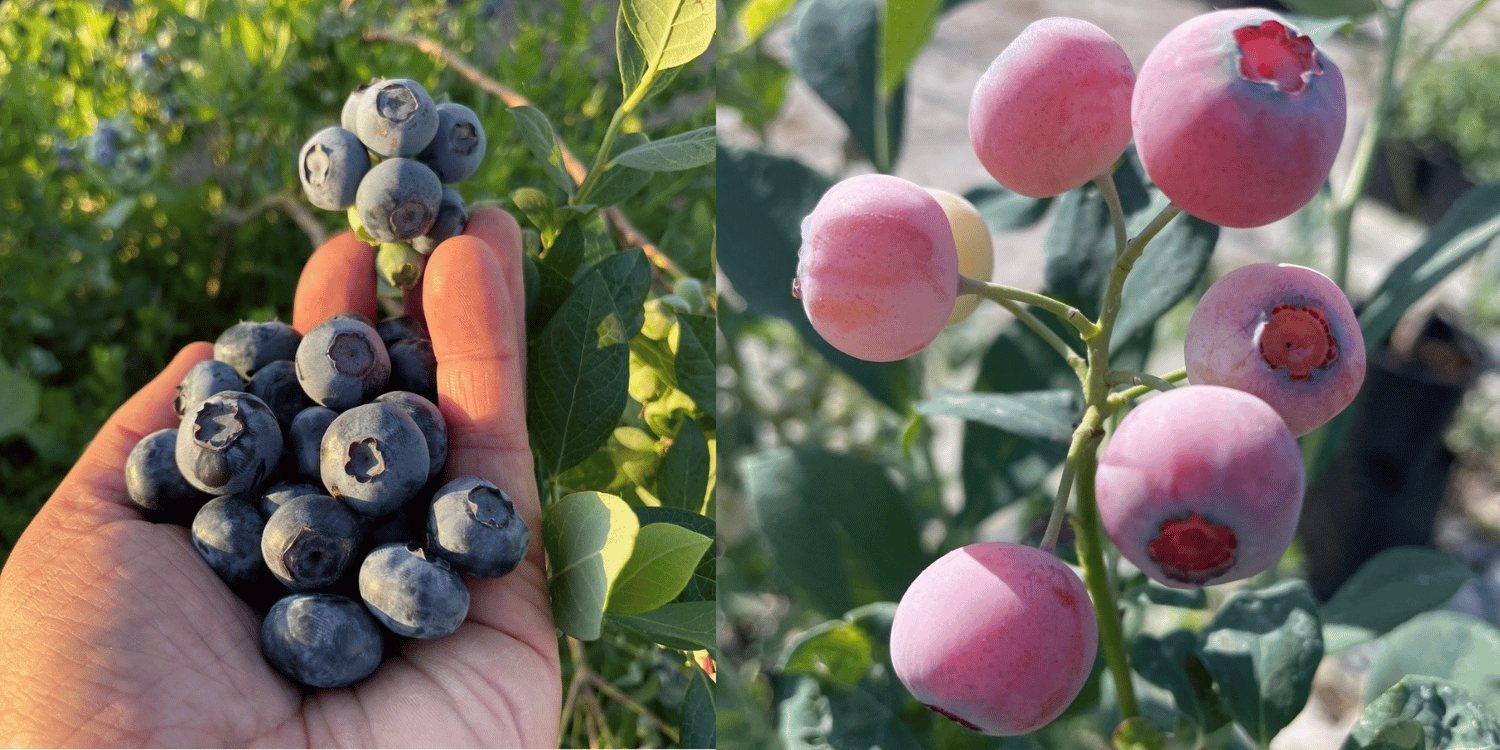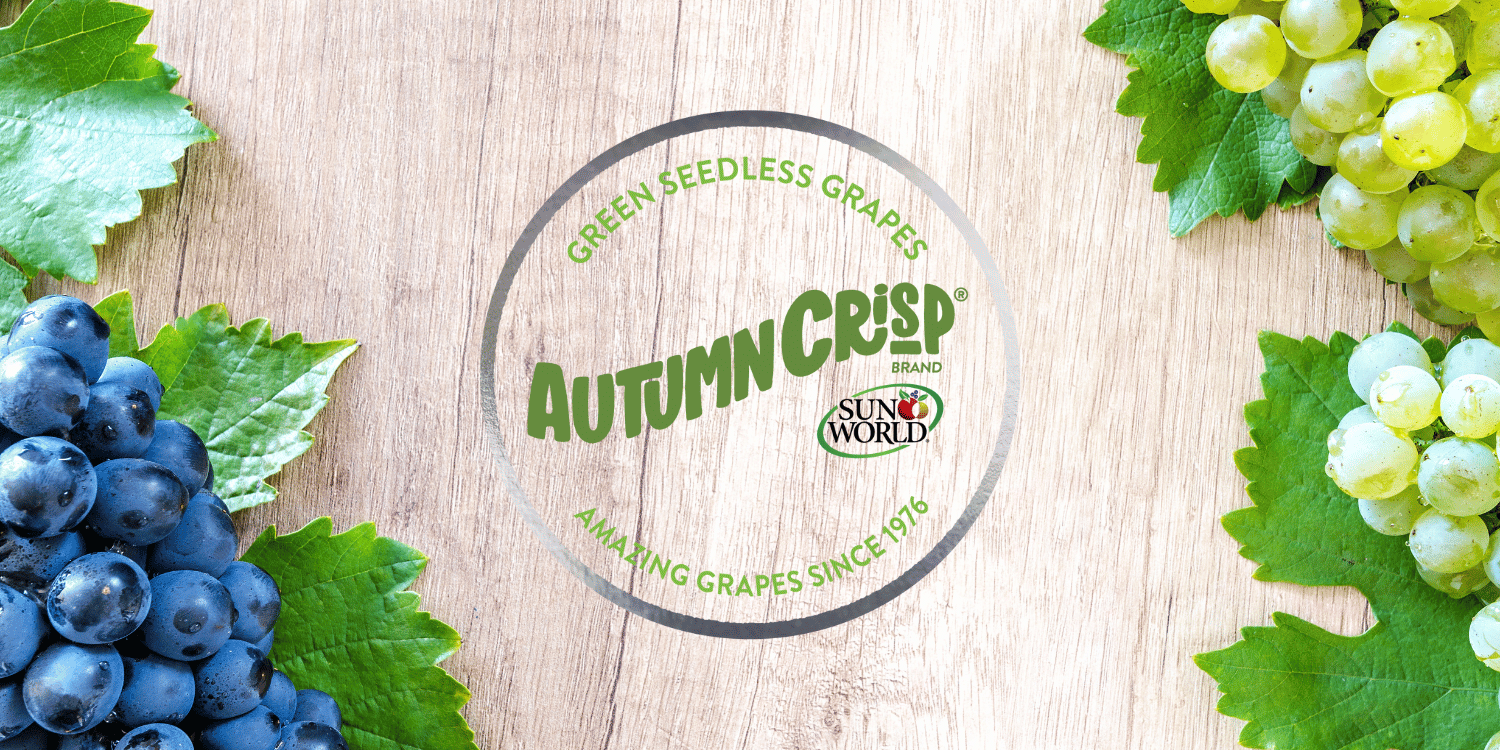With an ongoing surge in interest, greenhouse cultivation is increasingly embodying a fusion of traditional methods and cutting-edge technologies.
Progress made in the tech world over the past decade has instigated remarkable changes within the greenhouse industry.
The role of modern technology cannot be trivialized in reinforcing the sustainability, effectiveness, and profitability of these operations.
Advanced technological solutions are changing the way we approach crop management, environment control, and productivity optimization.
In this article, we lay the groundwork for understanding these remarkable advancements.
Furthermore, we will dig in into why they are now indispensable for modern, environmentally-conscious greenhouse operations.
- Climate control systems are critical for modern greenhouses.
- Hydroponic irrigation systems boost efficiency and yield.
- LED grow lights are essential for plant growth.
- Automated fertilizer injectors streamline nutrient delivery.
- Crop monitoring sensors improve tracking and management.
While these key technologies are a foundational aspect of modern greenhouses, there is a wealth of additional information still ahead.
In the following sections, I will unfold other pivotal facets related to greenhouse technologies that play significant roles in boosting productivity and enhancing efficiency.
From exploring varied types of tech-enabled greenhouse designs to understanding the potential of data analytics in greenhouse management, the upcoming content provides a broader picture of this intriguing subject matter.
The comprehensive detail aims to enhance your understanding and empower you with more pragmatic insights. Therefore, do stay tuned for more enlightening information.
Contents
Essential Technologies For Modern Greenhouses
1. Climate Control Systems
In Short: Advanced climate control systems are crucial in modern greenhouses, enabling the manipulation and maintenance of optimal conditions for plant growth. These systems, comprising several networked devices like heating, cooling and ventilation systems, thermostats, humidistats, CO2 generators and weather stations, reduce manual labor, enhance productivity and fully control the internal environment, significantly advancing precision farming practices.
The modern greenhouse offers a wealth of opportunities for enhancing plant growth, and one of its crucial elements lies in the implementation of advanced climate control systems.
The heart of efficient horticulture in greenhouses extensively leans onto the ability to manipulate and maintain an optimal climatic environment within the confined space.
Understanding the symbiotic connection between plant growth and climate, the practicality of well-structured climate control systems in a greenhouse becomes absolutely clear.
These primarily engage in adjusting temperatures, humidity levels, CO2 concentrations, and light intensity, as per the specific growth requirements of the plants inside.
An optimized climate control system ramps up productivity, longevity, and overall health of the greenhouse crops too.
The system in discussion is usually an assembly of multiple tools and devices networked together for seamless control over climatic conditions.
Three paramount elements of climate control systems are heating systems, cooling systems, and ventilation systems.
The need to complement natural weather patterns and provide adequate warmth during winters in greenhouses calls for the installation of efficient heating systems.
On the other hand, peak summer heat prompts the use of well-designed cooling systems to keep the internal temperature levels in check, ensuring the well-being of the plants.
Let’s dig in into some primary components of a functional climate control system:
- Thermostats help maintain a steady temperature by triggering heating or cooling operations as needed.
- Humidistats control the humidity levels by managing the ventilation and misting systems.
- CO2 generators maintain the necessary CO2 levels to maximize plant photosynthesis.
- Weather stations collect data about external weather conditions to adjust the internal environment accordingly.
Each component plays its role in harmonizing conditions inside the greenhouse, striking a perfect balance between the external and internal climate.
The use of such a comprehensive system greatly reduces the hassle of manual labor and constant monitoring.
Beyond just climate control, these systems can be interconnected with other technological components within the greenhouse, such as lighting and irrigation systems, enabling a holistic control over the entire greenhouse environment.
Undeniably, the climate control system acts as the central nervous system of a modern greenhouse, holding the capability to streamline processes and enhance productivity exponentially.
Adopting such systems, greenhouse owners step into a world of precision farming, where they gain the prowess to control and manipulate the complete growth cycle of the plants inside.
The development and integration of high-tech climate control systems rightly showcase how far modern greenhouses have come in terms of technological advancements and their commitment towards environment-friendly cultivation practices.
2. Hydroponic Irrigation Systems
In Short: Hydroponic irrigation systems deliver water and nutrients directly to plant roots, eliminating the need for soil, optimizing control over growth conditions, and reducing water wastage significantly. However, efficient management, accurate monitoring, and routine maintenance of these systems are essential for enhanced agricultural productivity and sustainability.
The Hydroponic Irrigation System represents a fundamental technological advancement in modern greenhouses.
Essentially, these systems provide a mechanism through which water and nutrients are delivered directly to the plants’ root systems in a controlled and consistent manner.
Quite significantly, the use of hydroponic systems negates the need for soil in the cultivation process, which offers numerous benefits.

For instance, there’s greater control over the plant’s growth conditions, which can lead to increased yield and quality.
Furthermore, it plays a crucial role in curbing water wastage, a feat that is remarkably important in the context of increasing global water scarcity.
It is important to note that there are different types of hydroponic irrigation systems, each with its own operation method and benefits.
Let’s dig in into a breakdown of some of these types and how they contribute to optimal greenhouse operations.
Below is a concise list of some commonly used hydroponic systems in modern greenhouses:
- Deep Water Culture (DWC): This system operates by suspending plants in a nutrient-rich water solution, with an air pump providing necessary oxygen to the roots.
- Nutrient Film Technique (NFT): With this system, nutrient solution is distributed over the roots with the help of a thin film, allowing excellent oxygen and nutrient absorption.
- Aeroponics: In aeroponics, plant roots are periodically sprayed with nutrient solution, which enhances nutrient absorption while giving the roots much-needed air exposure.
Beyond the type of hydroponic system, the success of these systems also depends on diligent management and monitoring.
Specific parameters such as pH level, nutrient concentration, and water temperature must be accurately monitored and adjusted as necessary to achieve optimal plant growth.
This kind of precise control over the cultivation environment can result in the production of superior-quality produce, regardless of external weather conditions.
This is why hydroponic irrigation systems are undoubtedly essential to modern greenhouse technologies, given their ability to ensure continuous, efficient, and quality production.
In addition to this, the systems are highly versatile, capable of being customized and scaled according to specific greenhouse demands.
Pro Tip: The Hydroponic Irrigation System fundamentally changes modern greenhouses by delivering water and nutrients directly to the plants’ root systems in a controlled manner, eliminating the need for soil, increasing yield and quality, and reducing water wastage, thus playing a crucial role in addressing global water scarcity.
Still, potential challenges such as system breakdown, power failure, or mismanagement could inhibit the system’s efficiency. To mitigate these issues, routine checks and maintenance are strongly advised.
Overall, when optimally used and managed, the Hydroponic Irrigation System could be a game-changer in enhancing productivity and sustainability in today’s agricultural landscape.
3. LED Grow Lights
In Short: LED grow lights play a critical role in modern greenhouses due to their ability to simulate sunlight with precision and provide optimal growth conditions for plants. They offer energy efficiency, longevity, and flexibility, enabling customizable light spectrums, vertical farming, automation, and integration with other technologies, thus enhancing productivity and reducing costs.
In the world of modern greenhouses, LED grow lights play a crucial role in providing optimal growth conditions for plants.
Their introduction in controlled environment agriculture has significantly revolutionized the way plants are grown.
The principal reason behind this is the unparalleled efficiency and precision that LED systems offer when it comes to simulating sunlight.
LED grow lights can be tailored to emit specific wavelengths of light, thereby ensuring that plants get the exact light spectrum necessary for their growth and development.
This is generally handled by adjusting the ratio of blue and red lights, which respectively influence vegetative growth and flowering in plants.
Such a fine-tuned control over light conditions within the greenhouse is simply unattainable with traditional horticultural lighting systems.
Let’s dig in into some standout features of LED grow lights that underscore their importance in modern greenhouses:
- Energy Efficiency: LED lights consume significantly less power compared to traditional horticultural lights, resulting in substantial cost savings.
- Longevity: Due to their robust construction and less heat generation, LED lights tend to have a longer lifespan, further reducing replacement costs.
- Flexibility: From adjustable brightness to customizable light spectrum, LED grow lights offer a high degree of control.
Another significant advantage of LED grow lights lies in their compact size and flexible deployment options.
They can be placed in close proximity to the plants without causing heat damage, allowing for vertical farming and optimizing space utilization in the greenhouse.
Moreover, the use of LED grow lights can be automated according to a schedule, further reducing labor inputs and the risk of human error.
Such scheduling can be easily integrated with the entire automation system of the greenhouse, leading to a smooth and synchronized operation.
By harnessing the flexibility and efficiency of LED grow lights, growers can dramatically increase the productivity of their greenhouses while lowering the operational costs.
However, it’s important to note that the effectiveness of LED grow lights does not rule out the use of other technologies.
They are part of a larger technology ecosystem in the greenhouse, designed to work in harmony with irrigation systems, climate control mechanisms, and automated fertilizer injectors among others.
This holistic and integrated approach is what makes modern greenhouses technologically advanced and highly productive.
4. Automated Fertilizer Injectors
In Short: Automated fertilizer injectors are pivotal in modern greenhouses, optimizing plant health and productivity by accurately dosing nutrients. Their efficiency, consistency, productivity boost, and labor-saving nature are key benefits that justify the significant investment, making them essential tools in productive greenhouse farming.
When it comes to modern greenhouse technologies, automated fertilizer injectors play a pivotal role in maintaining ideal plant health.
This sophisticated technology optimizes productivity by ensuring that plants receive the correct amounts of nutrients at the right time.
It is worth noting that fertilization is more intricate than mere addition of plant nutrients; it involves accurate and consistent dosages that are crucial to the plant’s growth.

This high level precision is impossible to obtain manually and this is where automated fertilizer injectors are a game-changer.
With these systems, growers can pre-set the specific amounts of nutrients required, reducing the risk of over or under fertilization.
Over-fertilization can lead to a waste of resources and potential plant damage while under-fertilization might lead to stunted growth and low productivity.
Moreover, these automated systems can adapt to the changes in plant needs as they grow and develop, ensuring optimal nutrient management over time.
Below are some of the key benefits attached to using automated fertilizer injectors in a modern greenhouse:
- Efficient Use of Resources: These injectors reduce wastage by applying precise fertilizer amounts based on the crop’s current needs.
- Consistency: They ensure that fertilizer application is uniform across all plants, preventing disparities in growth and yield.
- Increased Productivity: Proper fertilization promotes healthy growth, hence leading to higher yields.
- Labour Saving: Their automated nature eliminates the laborious manual task of fertilizing each plant individually.
While the integration of automated fertilizer injectors into a greenhouse system can represent a significant investment, the long-term benefits undoubtedly justify their use.
They are durable, reliable and easy to maintain, making them a sound choice for commercial greenhouses targeting high productivity.
Could this be the missing key to unlocking greenhouse agricultural prosperity? As technology continues to drive farming innovations, it is clear that automated fertilizer injectors are among the tools that modern greenhouses cannot afford to overlook.
Pro Tip: In the sphere of modern greenhouse technologies, automated fertilizer injectors are game-changers; their capacity to administer accurate and consistent nutrient dosages maximizes productivity, making them an essential tool for successful and efficient greenhouse farming.
Their ability to bridge the gap between traditional fertilization methods and the need for precision makes them a must-have tool for modern greenhouses.
And so, as we dig in into other equally important aspects of greenhouse technology, it is important to remember that the efficient management of plant nutrients is a cornerstone of productive greenhouse farming.
5. Crop Monitoring Sensors
In Short: Crop monitoring sensors are now vital in modern greenhouse farming, they provide crucial real-time data to maintain the perfect environment for crop growth. Major types include temperature and humidity sensors, soil moisture monitors, and light intensity sensors, these tools not only improve crops’ yield and quality, but also contribute to the sustainability of greenhouse farming.
The incorporation of crop monitoring sensors constitutes a significant element in ensuring the optimal operation of a modern greenhouse.
These sensors fall into the category of essential technologies, primarily due to their primary function of collecting important data about the existing environmental conditions within the greenhouse.
This sort of technology has made it possible for the maintenance of the perfect balance of elements to cultivate healthy crops consistently.
The potential value of crop monitoring sensors extends beyond just maintaining a balanced environment, it provides growers with real-time data that informs their decision-making process.
By utilizing these sensors, growers can make necessary adjustments to their greenhouse environment, catering to the precise needs of their crops.
In the past, growers would have to rely on visual observation and manual adjustments, but with the advancement of technology, greenhouse farming has become more productive and efficient.
Now let’s dig in into some of the key components and types of crop monitoring sensors, which will offer a better insight into their functionality and importance in a modern greenhouse.
Firstly, let’s gather our ideas by listing several types of crop monitoring sensors that offer considerable value to the practices within a greenhouse:
- Temperature and Humidity Sensors: These measure the internal temperature and humidity level, important parameters to maintain optimal growth conditions for crops.
- Soil Moisture Sensors: These evaluate the moisture level of the soil, ensuring that plants receive just the right amount of water.
- Light Intensity Sensors: By monitoring the intensity and duration of light, these sensors ensure crops receive the right amount of light.
Each of these sensor types plays a crucial role in the overall success of crop cultivation.
The automation provided by these sensors has considerably reduced the possibilities of human error, thus resulting in improved crop yield and quality.
Technological advancements have also led to the integration of cloud-based systems and data analytics into these sensors, making it possible to receive and analyze data in real-time.
By deploying cloud-based systems and analytics, growers can make informed decisions immediately, possibly preventing damage to crops due to sudden changes in the greenhouse environment.
This modern approach to crop monitoring not only optimizes crop yield but also ensures conservation of resources, hence contributing substantially to the sustainability of greenhouse farming.
Pro Tip: Invest in crop monitoring sensors to optimize crop yield, enhance decision-making with real-time data and conserve resources, as they are essential in maintaining the optimal conditions inside a modern greenhouse.
Far from being a luxury, crop monitoring sensors have become indispensable to the operation of a modern greenhouse, perfectly aligning with the narrative of farming in the technologically advanced future.
Investing in these sensors is a strategic move for anyone seeking to run a successful and sustainable greenhouse farm.
The Bottom Line
Modern greenhouses now heavily rely on state-of-the-art technologies to maximize yield and minimize environmental impact.
Technologies such as specialized LED lighting, climate control systems, hydroponics, automated systems, and data analytics are pivotal in ensuring the efficiency and productivity of these greenhouses.
They facilitate optimal plant growth conditions, streamlined operations, water and nutrient efficiency, and smart decision-making based on analytics.
The continual advancements in greenhouse technology underscores its significant role in the future of sustainable agriculture and food security.




















